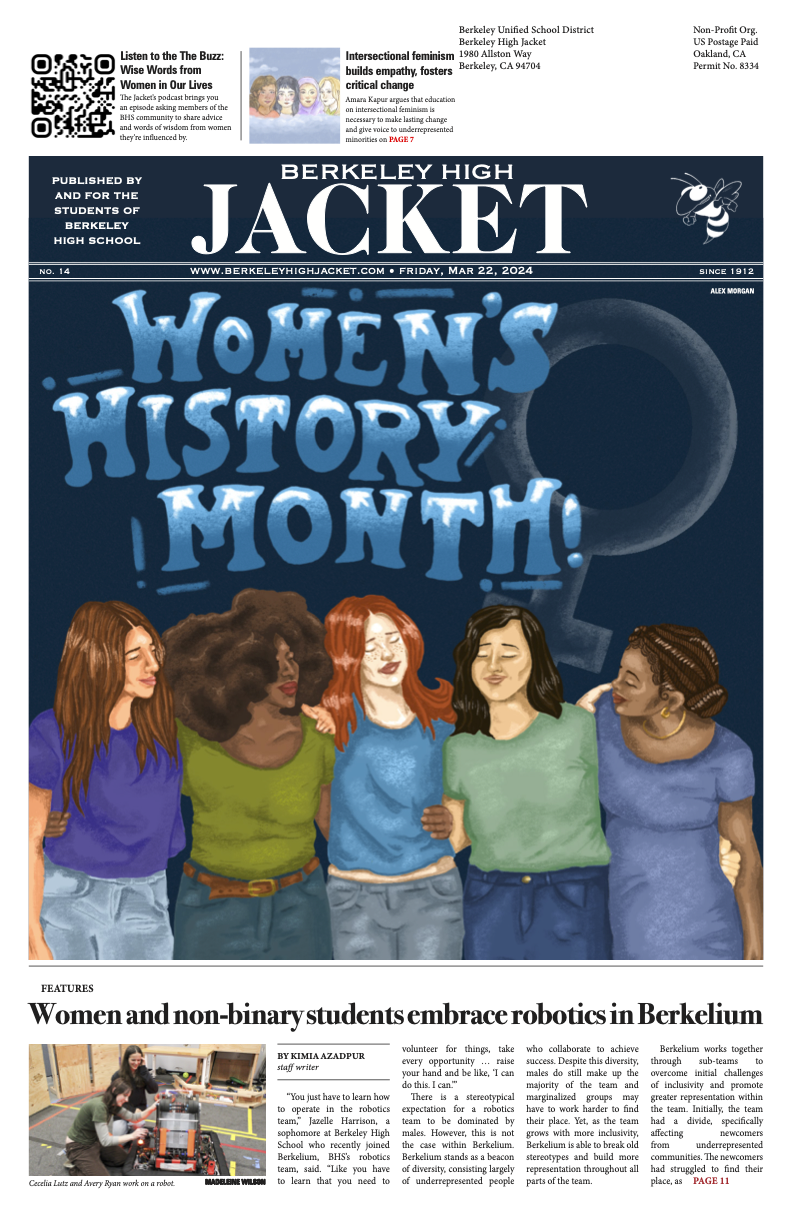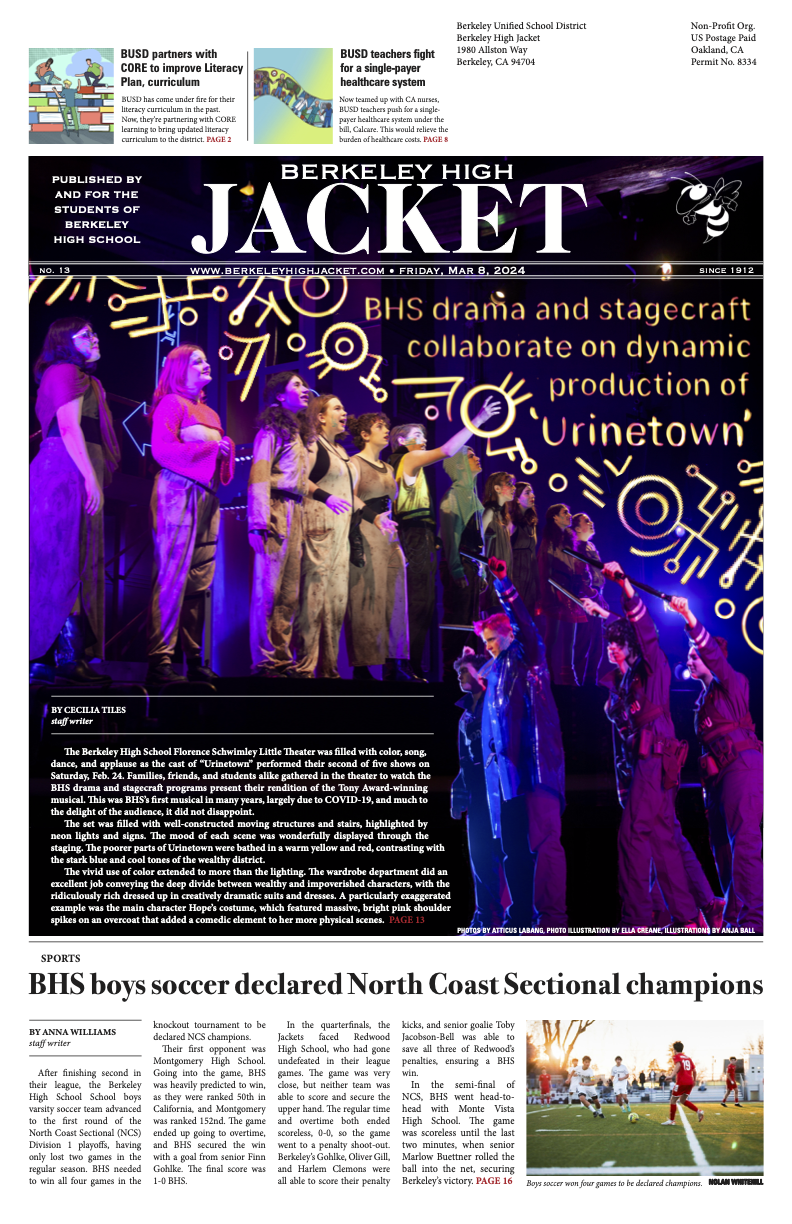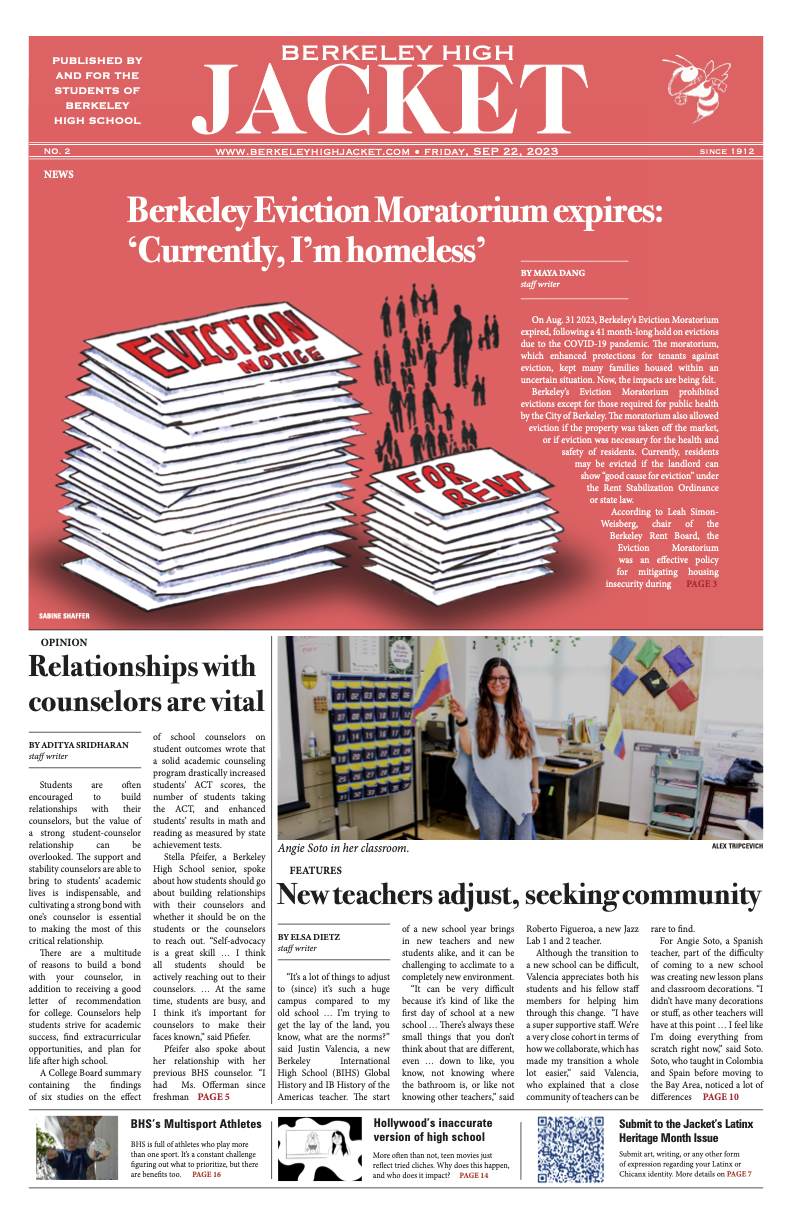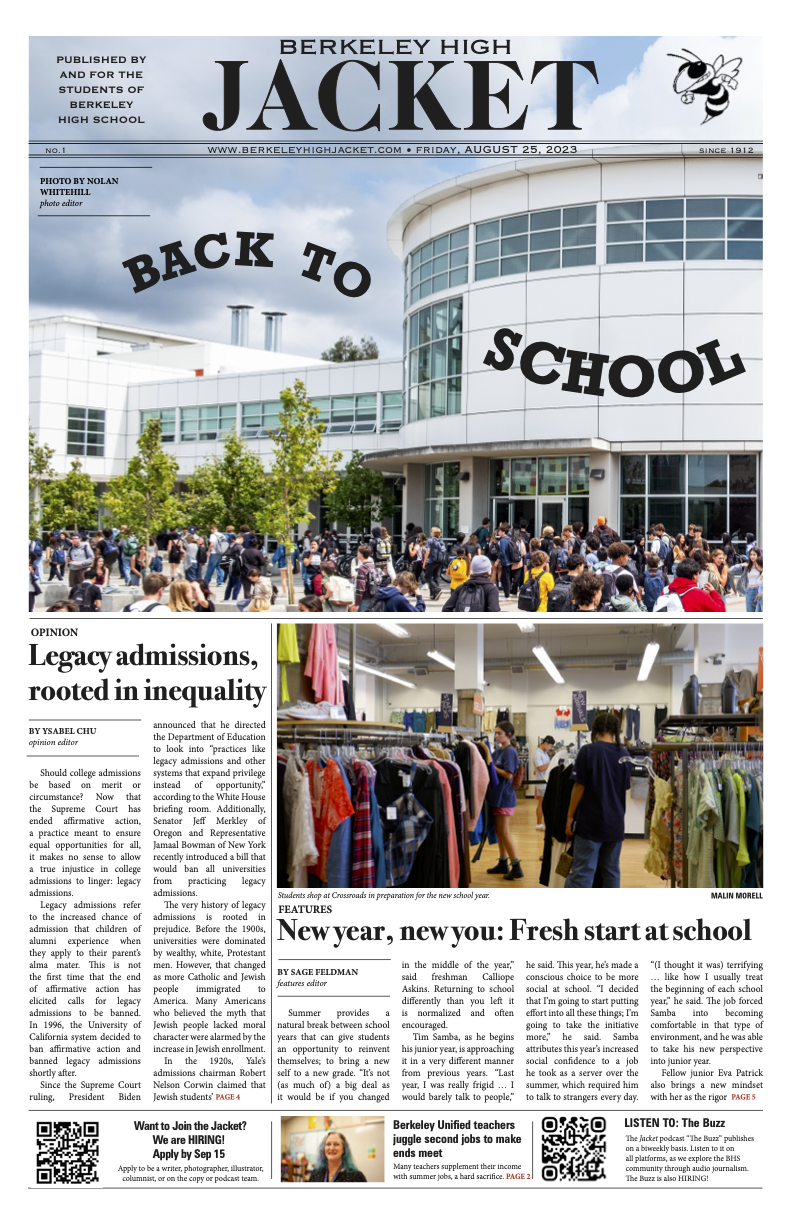Dress codes suppress individuality and are oftentimes biased against women, leading to the restriction of personal style and reinforcement of unfair gender stereotypes. Though dress codes began as a symbol of equality and formality, they are now limiting the opportunities for self expression while upholding double standards.
Scout Wheat, a sophomore at Berkeley High School, moved to the Bay Area from North Carolina at the beginning of her freshman year. Wheat’s former school had a rigid dress code including but not limited to, no tank tops, hats, hoodies, or ripped jeans, making the relaxed dressing rules of BHS a shock. “It was a huge change, coming here from a school with such a strict dress code, it was very jarring. At first it was almost like a cultural shock of sorts,” Wheat said, “especially on Rally (Red & Gold) Day I'm like, 'whoa, that's kind of intense!'” Though differences in dress codes can create culture shock for some, the more relaxed rules increase personal expression.
BHS is very loose with their dress policies, not even having an official dress code. In stark contrast, there are many schools in the Bay Area with uniforms and/or strict dress codes. Saint Mary’s College High School, a private high school in Berkeley, has a dress code requiring no pajamas, athletic shorts, or sweatpants, among other restrictions. “It's more targeted towards girls and what they can wear,” Arel Masliyah, a Saint Mary’s sophomore, said. This shows that many students are aware of the unfair gendered expectations when it comes to dress codes. Masliyah does not love the dress code, but understands its purpose and where it comes from, “You can't wear PJs at my school. I feel like that's kind of fine because it's still some sort of learning environment, we want to be respectful.”
Oakland's Bishop O’Dowd High School is known for its policy requiring students to wear O’Dowd branded polo shirts every day except Friday. Like Saint Mary’s, it also has a strict no sweat pants or ripped jeans rule, and pant length requirement. Though dress codes were made to enforce dress equality, the rules do not feel equal. “(For) guys, it's just they can't wear sweatpants, but girls can't wear leggings. They can't wear sweatpants. They can't wear shorts that most girls wear, (and) shorts and skirts that aren't super duper long,” Tuesday Soloman, an O’Dowd freshman said. Even though dress codes were made to imply equality, they are applied unevenly towards girls, reinforcing the stereotypical idea of girls' clothes being “distracting” at school. At Wheat's school in North Carolina, she said, “I never saw a single guy at my school get dress coded,” Wheat said, “but I, and a number of my friends, were told to put on jackets … it also created stereotypes amongst us students, because we'd be like 'don't hang out with them, that’s the group that always gets dress coded.'” Wheat’s experience with her former school’s dress code demonstrates how dress codes can shape the entire school environment, leading to a judgemental atmosphere.
As more and more patriarchal practices are removed from what is considered normal, it's important that BHS paves the way for other schools to promote self expression and equality through a lack of a dress code.





